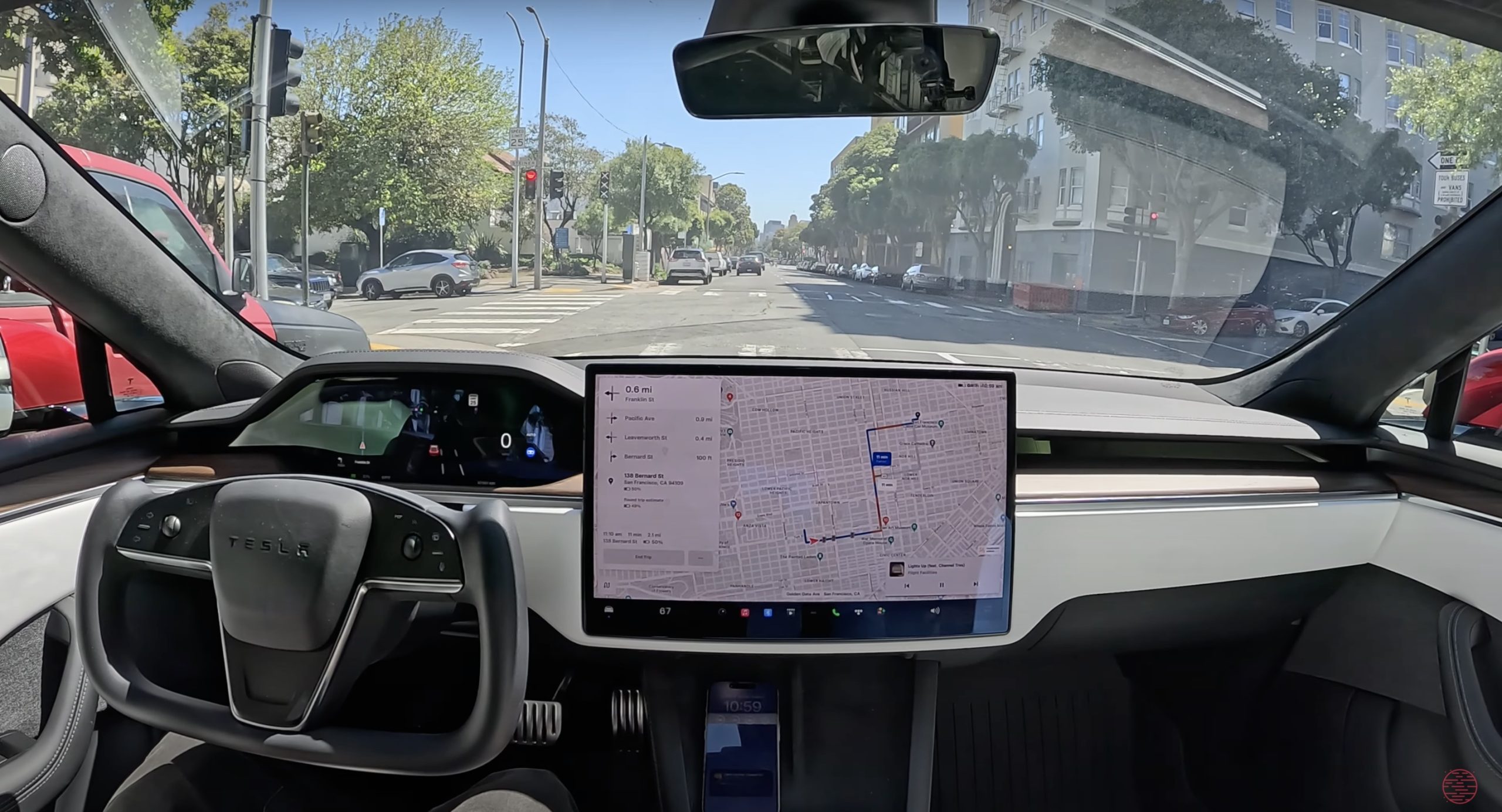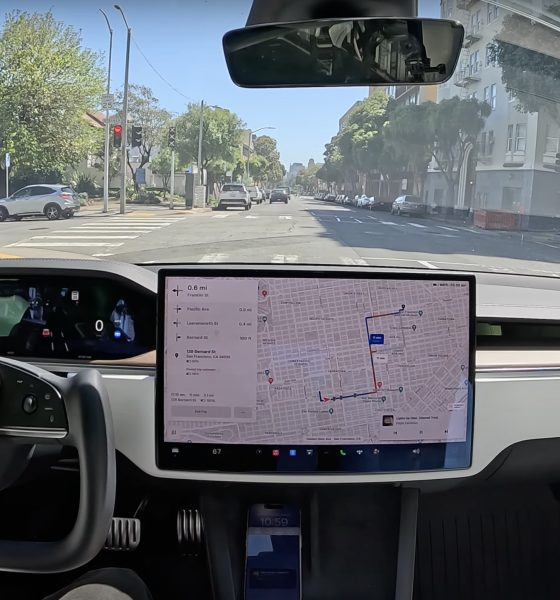A report shared over the weekend claims that the transition team for President-elect Donald Trump is looking to create a federal framework for self-driving vehicles—and to make the sector a top priority in the upcoming term.
Trump’s transition team is looking to create federal rules for the rollout of autonomous vehicles, according to people familiar with the matter in a report from Bloomberg on Sunday. The news comes as Tesla and others are developing and deploying autonomous vehicles, and as Elon Musk has officially been named a co-leader of the Department of Government Efficiency (DOGE) for the Trump administration.
The sources also said that autonomy laws would be a major priority for the U.S. Department of Transportation after past efforts to increase the number of available permits for self-driving vehicles have been thwarted. According to additional people familiar with the matter who spoke under the condition of anonymity, the Trump team is also actively looking to find policy leaders to help develop the guidelines.
Currently, the National Highway Traffic Safety Administration (NHTSA) lets manufacturers deploy as many as 2,500 self-driving vehicles per year under a granted exemption, though attempts to increase allowed units to 100,000 have been unsuccessful. Self-driving vehicles without a steering wheel or accelerator pedals—such as Tesla’s recently unveiled Cybercab—aren’t currently permitted to be deployed en masse, but many think that such a move from Trump could accelerate the deployment of the technology.
Tesla, Waymo, and others developing self-driving vehicles
Currently, Tesla owners can purchase and use the company’s Supervised Full Self-Driving (FSD) to access semi-autonomous driving, though drivers are expected to be attentive and prepared to retake control of the vehicle at any moment. Tesla also unveiled its two-seat Cybercab last month, expected to be based on FSD and to enter production in 2026.
Below you can see our first ride in the Cybercab from the We, Robot unveiling event.
🎥: Our FULL first ride in the @Tesla Cybercab pic.twitter.com/6gR7OgKRCz— TESLARATI (@Teslarati) October 11, 2024
While Tesla doesn’t currently operate a paid ride-hailing service like the Alphabet-owned Waymo, or others working toward this model, the company has teased an app based on an FSD ride-hailing service in the past. Additionally, many within the Tesla community claim that FSD will be more scalable than its competitors, due in part to its training of an AI neural network using millions of clips of real-time driving footage from FSD Supervised users.
Other companies such as Amazon-owned Zoox, General Motors-run (GM-run) Cruise, and still many others have also deployed driverless ride-hailing services to varying degrees of success. While California has been one of a few states where self-driving services have been able to start deployment in limited quantities, autonomous driving has also come under fire from regulators and authorities following a few cases of accidents and traffic violations.
Nonetheless, the development of a federal framework for autonomous vehicles could affect how this happens on a national level—and it will likely come to the benefit of Musk and Tesla, especially given the CEO’s closeness with Trump.
Tesla’s next step of dominance comes from Trump EV tax credit policy: Wedbush
Elon Musk and Trump’s Department of Government Efficiency
Musk will lead Trump’s newly created DOGE division in tandem with Vivek Ramaswamy, with the department aiming to “dismantle government bureaucracy” and cut down on government spending. The Tesla CEO initially endorsed Trump in July during his presidential campaign, later forming the political action committee (PAC) America PAC in support of the now-President-elect.
In addition to the financial support, Musk was a vocal backer of Trump’s campaign at rallies and in online media appearances, saying last month that Trump “must win to preserve the Constitution and democracy.” Many have also debated whether Trump’s removal of the federal $7,500 electric vehicle (EV) tax credit would be bad for Tesla and other EV makers, though Musk has said that it will likely only benefit Tesla.
The recent support for Trump also follows an ongoing set of feuds Musk has had with President Joe Biden during his presidency, as was sparked by Tesla not being invited to the administration’s EV summit, and by Biden claiming that GM had been the leader in EV deployment. Musk said in July that Biden is “utterly controlled” by the United Automotive Workers (UAW), following multiple criticisms of the union in the past.
What are your thoughts? Let me know at zach@teslarati.com, find me on X at @zacharyvisconti, or send us tips at tips@teslarati.com.
Former Tesla executive warns of delays to European ADAS regulations

Elon Musk
Elon Musk’s X will start using a Tesla-like software update strategy
The initiative seems designed to accelerate updates to the social media platform, while maintaining maximum transparency.

Elon Musk’s social media platform X will adopt a Tesla-esque approach to software updates for its algorithm.
The initiative seems designed to accelerate updates to the social media platform, while maintaining maximum transparency.
X’s updates to its updates
As per Musk in a post on X, the social media company will be making a new algorithm to determine what organic and advertising posts are recommended to users. These updates would then be repeated every four weeks.
“We will make the new 𝕏 algorithm, including all code used to determine what organic and advertising posts are recommended to users, open source in 7 days. This will be repeated every 4 weeks, with comprehensive developer notes, to help you understand what changed,” Musk wrote in his post.
The initiative somewhat mirrors Tesla’s over-the-air update model, where vehicle software is regularly refined and pushed to users with detailed release notes. This should allow users to better understand the details of X’s every update and foster a healthy feedback loop for the social media platform.
xAI and X
X, formerly Twitter, has been acquired by Elon Musk’s artificial intelligence startup, xAI last year. Since then, xAI has seen a rapid rise in valuation. Following the company’s the company’s upsized $20 billion Series E funding round, estimates now suggest that xAI is worth tens about $230 to $235 billion. That’s several times larger than Tesla when Elon Musk received his controversial 2018 CEO Performance Award.
As per xAI, the Series E funding round attracted a diverse group of investors, including Valor Equity Partners, Stepstone Group, Fidelity Management & Research Company, Qatar Investment Authority, MGX, and Baron Capital Group, among others. Strategic partners NVIDIA and Cisco Investments also continued support for building the world’s largest GPU clusters.
News
Tesla FSD Supervised wins MotorTrend’s Best Driver Assistance Award
The decision marks a notable reversal for the publication from prior years, with judges citing major real-world improvements that pushed Tesla’s latest FSD software ahead of every competing ADAS system.

Tesla’s Full Self-Driving (Supervised) system has been named the best driver-assistance technology on the market, earning top honors at the 2026 MotorTrend Best Tech Awards.
The decision marks a notable reversal for the publication from prior years, with judges citing major real-world improvements that pushed Tesla’s latest FSD software ahead of every competing ADAS system. And it wasn’t even close.
MotorTrend reverses course
MotorTrend awarded Tesla FSD (Supervised) its 2026 Best Tech Driver Assistance title after extensive testing of the latest v14 software. The publication acknowledged that it had previously criticized earlier versions of FSD for erratic behavior and near-miss incidents, ultimately favoring rivals such as GM’s Super Cruise in earlier evaluations.
According to MotorTrend, the newest iteration of FSD resolved many of those shortcomings. Testers said v14 showed far smoother behavior in complex urban scenarios, including unprotected left turns, traffic circles, emergency vehicles, and dense city streets. While the system still requires constant driver supervision, judges concluded that no other advanced driver-assistance system currently matches its breadth of capability.
Unlike rival systems that rely on combinations of cameras, radar, lidar, and mapped highways, Tesla’s FSD operates using a camera-only approach and is capable of driving on city streets, rural roads, and freeways. MotorTrend stated that pure utility, the ability to handle nearly all road types, ultimately separated FSD from competitors like Ford BlueCruise, GM Super Cruise, and BMW’s Highway Assistant.
High cost and high capability
MotorTrend also addressed FSD’s pricing, which remains significantly higher than rival systems. Tesla currently charges $8,000 for a one-time purchase or $99 per month for a subscription, compared with far lower upfront and subscription costs from other automakers. The publication noted that the premium is justified given FSD’s unmatched scope and continuous software evolution.
Safety remained a central focus of the evaluation. While testers reported collision-free operation over thousands of miles, they noted ongoing concerns around FSD’s configurable driving modes, including options that allow aggressive driving and speeds beyond posted limits. MotorTrend emphasized that, like all Level 2 systems, FSD still depends on a fully attentive human driver at all times.
Despite those caveats, the publication concluded that Tesla’s rapid software progress fundamentally reshaped the competitive landscape. For drivers seeking the most capable hands-on driver-assistance system available today, MotorTrend concluded Tesla FSD (Supervised) now stands alone at the top.
News
Elon Musk’s Grokipedia surges to 5.6M articles, almost 79% of English Wikipedia
The explosive growth marks a major milestone for the AI-powered online encyclopedia, which was launched by Elon Musk’s xAI just months ago.

Elon Musk’s Grokipedia has grown to an impressive 5,615,201 articles as of today, closing in on 79% of the English Wikipedia’s current total of 7,119,376 articles.
The explosive growth marks a major milestone for the AI-powered online encyclopedia, which was launched by Elon Musk’s xAI just months ago. Needless to say, it would only be a matter of time before Grokipedia exceeds English Wikipedia in sheer volume.
Grokipedia’s rapid growth
xAI’s vision for Grokipedia emphasizes neutrality, while Grok’s reasoning capabilities allow for fast drafting and fact-checking. When Elon Musk announced the initiative in late September 2025, he noted that Grokipedia would be an improvement to Wikipedia because it would be designed to avoid bias.
At the time, Musk noted that Grokipedia “is a necessary step towards the xAI goal of understanding the Universe.”
Grokipedia was launched in late October, and while xAI was careful to list it only as Version 0.1 at the time, the online encyclopedia immediately earned praise. Wikipedia co-founder Larry Sanger highlighted the project’s innovative approach, noting how it leverages AI to fill knowledge gaps and enable rapid updates. Netizens also observed how Grokipedia tends to present articles in a more objective manner compared to Wikipedia, which is edited by humans.
Elon Musk’s ambitious plans
With 5,615,201 total articles, Grokipedia has now grown to almost 79% of English Wikipedia’s article base. This is incredibly quick, though Grokipedia remains text-only for now. xAI, for its part, has now updated the online encyclopedia’s iteration to v0.2.
Elon Musk has shared bold ideas for Grokipedia, including sending a record of the entire knowledge base to space as part of xAI’s mission to preserve and expand human understanding. At some point, Musk stated that Grokipedia will be renamed to Encyclopedia Galactica, and it will be sent to the cosmos.
“When Grokipedia is good enough (long way to go), we will change the name to Encyclopedia Galactica. It will be an open source distillation of all knowledge, including audio, images and video. Join xAI to help build the sci-fi version of the Library of Alexandria!” Musk wrote, adding in a later post that “Copies will be etched in stone and sent to the Moon, Mars and beyond. This time, it will not be lost.”










